AI in Fashion: The Future of Style

Artificial intelligence has been transforming many industries over the past decade, and the fashion industry is no exception. With the ability to blend the creative direction of human designers with the power of generative AI, fashion brands are now able to bring their collections to market faster and sell them more efficiently, and ultimately improve the customer experience.
However, as with any emerging technology, there is also the risk of a decline in individuality and creativity in fashion products. Let's explore how some of the biggest names in fashion are currently using AI and examine both the benefits and potential drawbacks of this innovative technology.
AI Fashion Week
The first-ever AI Fashion Week, created by Maison Meta and leader in the fashion world Revolve, took place on April 20-21, 2023, in New York City. The event showcased over 130 AI collections that were selected based on their quality of work and adherence to the guidelines provided.
Designers were asked to provide a collection of 15-30 looks that were all created using different generative AI tools. They were also encouraged to take into account runway ambiance like the front row seating as well and even submit a backstage picture if they wanted to capture the essence of a fashion show.

Public voting took place in person and via their web app, and from that, 10 finalists will be selected in early May. The top three winners will be announced later in May and they will enter the first "AI Fashion Incubator," where they will create their brand, produce their collection, and sell it online on Revolve.com.
One of the key requirements was that everything must be digitally created and that designers must ensure that their garments can be physically produced. The designers will receive assistance during the launch process, including help with pattern making, sample development, and marketing and communications - in part from AI.
McKinsey senior partner Holger Harreis points out that “Translating the design into a production process will be needed ... Right now, human intelligence will still be needed in this step. Parts might be generative AI-supported, but it will stay human-centric for a while.”
Meta-Catwalks
Then there are companies like Fashion Innovation Agency, FIA, who are taking it to the next level with their Meta-Catwalk. A project they collaborated on with AI artist Atara at the London College of Fashion to create a hyper-realistic runway.
The goal was to create a tool that enables users to enter a designer's name or style description, and then watch a catwalk video that has been modified and enhanced with new generated footage to match.

They explained a bit about how they did it:
"AI models were anchored in datasets curated from the creative works of five iconic fashion designers, alongside imagery that captures the brand’s aesthetic.
Employing Midjourney to generate concepts, a diverse array of AI models were trained using Dreambooth and stable diffusion technologies. ATARA integrated these AI models with evaluation of a series of archival fashion show footage from London College of Fashion. The archive video was overlaid with newly created AI-generated models, garments and environments to create a hyper-realistic meta catwalk."
Client Engagement
Tommy Hilfiger hosted an AI design competition which really showcases the ability of AI to promote client engagement and interaction within the fashion industry. The competition invited competitors to leverage the world’s creator tools to create a piece of digital fashion in the brand’s signature preppy style.
They offered example prompts on the official Tommy Hilfiger Twitter page:
"Tommy Hilfiger, puffer jacket, natural shapes, future design, white photo studio, Navy, Red, White”
Which produced outputs like:
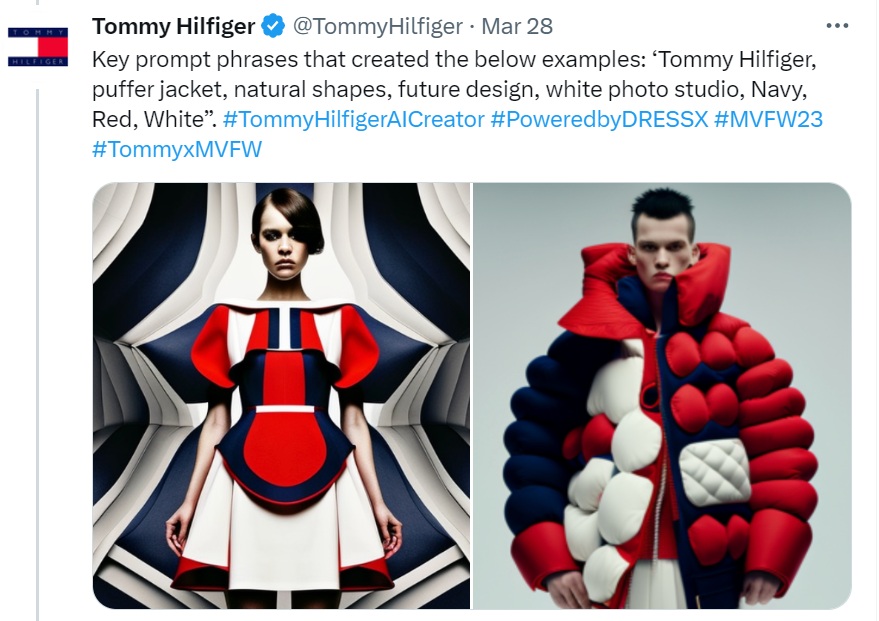
They hosted their competition at Decentraland's Metaverse Fashion Week which featured virtual spaces built by fashion brands such as Balenciaga, Adidas, Coach, and more to showcase digital architecture, fashion aesthetics, and clothing designs.
The winner's submission, pictured below, will be created by DressX as a digital fashion collectible, AR filter, and wearable for Decentraland.
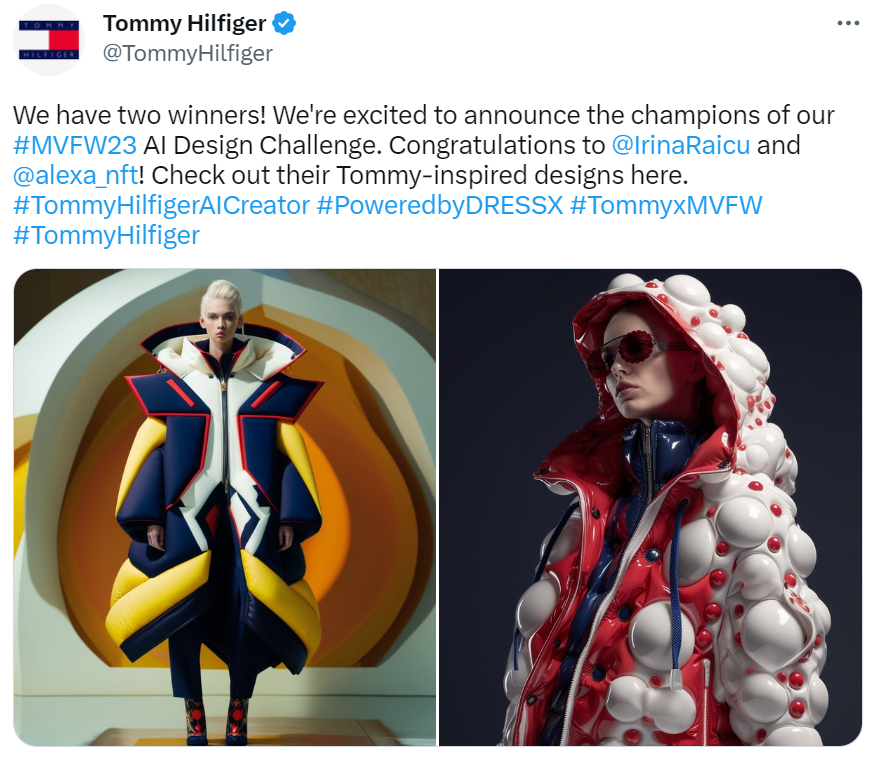
How to Design with AI
But how do you design a fashion collection using AI?
Fashion Technology magazine "The Interline" described their workflow to give us a bit of insight on exactly how you could go about designing a sneaker, for example.

"Our workflow for each of these images was the same. The products themselves were created by Midjourney, using the version 4 modifier and a granular set of inputs that were adjusted over hundreds of requests. Those square images were then exported and taken into DALL-E 2, where the canvas was broadened using AI-outpainting to extend the environments, again with tens or hundreds of generations per finished image. The final composition was then tidied up using more run-of-the-mill machine learning in a popular photo editing package to inpaint errors and fix visible seams and colour joins, before colour grading and lighting were tweaked by hand."
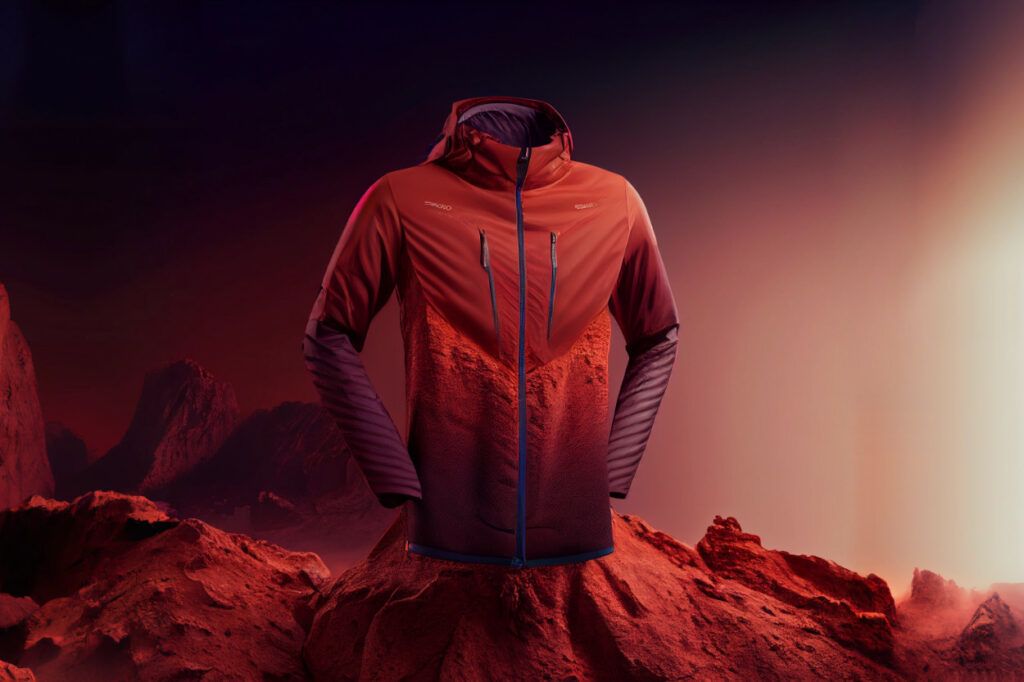
So the final product is a result of many, many prompts, plus additional editing. Even the AI Fashion Week submissions were allowed to be photoshopped to get rid of the 6 fingers and weird faces generative AI puts out.
Virtual Dressing Rooms
Virtual try-ons are yet another example of how generative AI can improve sales and consumer experience. A very practical application of AI in the fashion industry, especially since online shopping has increased by 40% over the last 5 years.
Paris-based Veesual enables virtual try-on integration for e-commerce fashion brands, meaning customers can choose their model and pick clothes to try on.
Personalized shopping experience
Machine learning and AI also have the potential to offer highly personalized visual similarity and product recommendations to customers while taking into account the individual's body type, coloring (including hair and eye color, skin tone, and undertones), occasions they dress for, and style persona.
Zalando is one such company that has launched a fashion assistant powered by ChatGPT. The fashion assistant can help customers with fashion-related questions, including style advice and product recommendations. It uses natural language processing to understand and respond to customer queries in a conversational manner. The fashion assistant is available in multiple languages and is expected to improve customer experience on the platform.

For example, if a customer asks:
“What should I wear for a wedding in Santorini in July?”,
Zalando’s fashion assistant is able to understand that this is a formal event, and what the weather is in Santorini in July, and then, give a written response with recommendations for specific clothes you can buy.
Or, if you want to get personalized style advice using the clothes that are already in your closet, there is an app for that! The Skap wardrobe organizer lets you upload pictures of your own clothes, and then the AI stylist will generate looks for you and even let you plan your outfits for each day of the week!
Product Development
Seattle-based technical fashion designer Oleksandra Baukh, suggests that you can use ChatGPT to help with fashion design, but rather than asking it to design a garment from scratch, she suggests asking questions focused around the main stages of product development like;
"What are the latest fashion trends?"
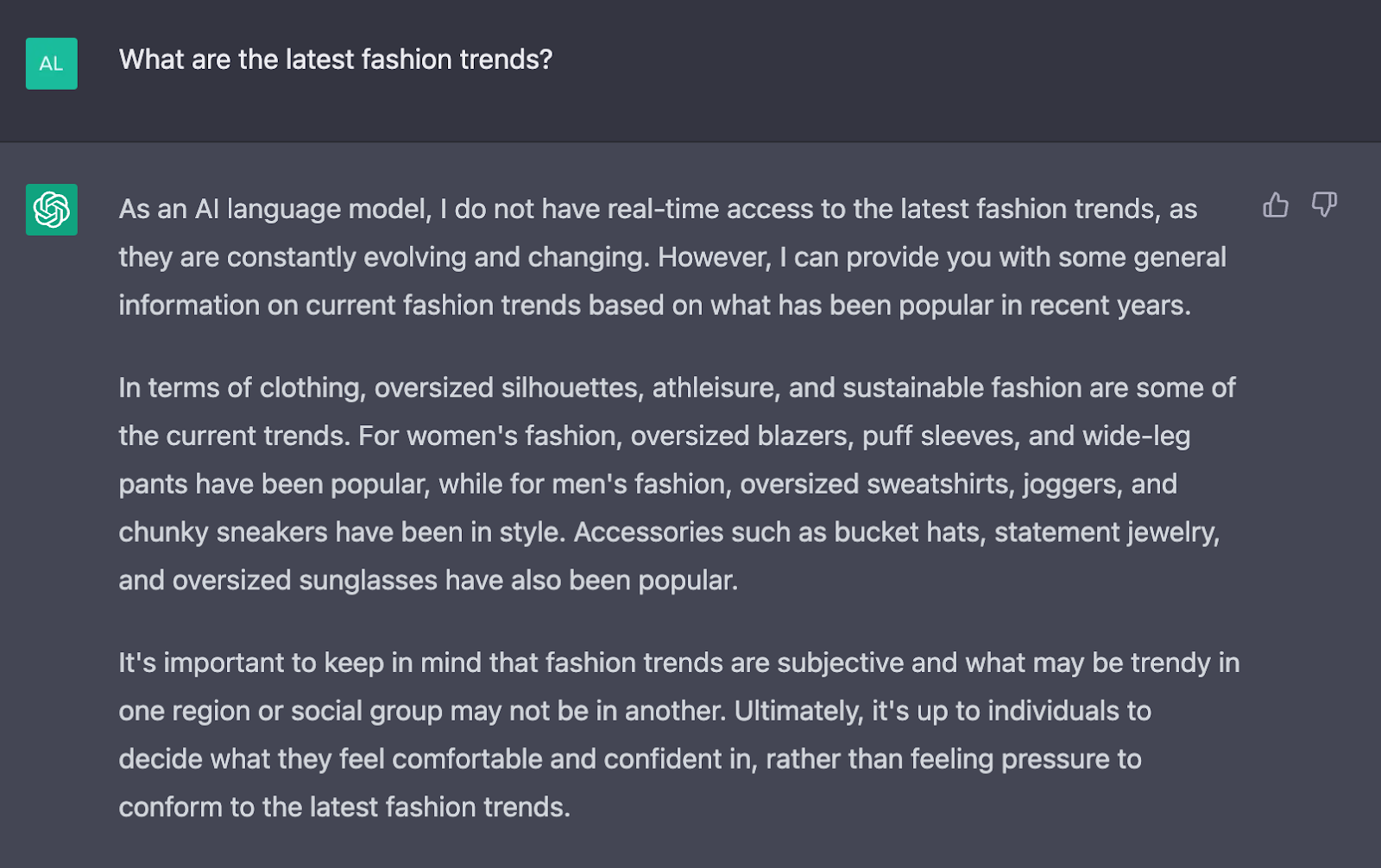
and to find examples of sustainable sportswear fabric;
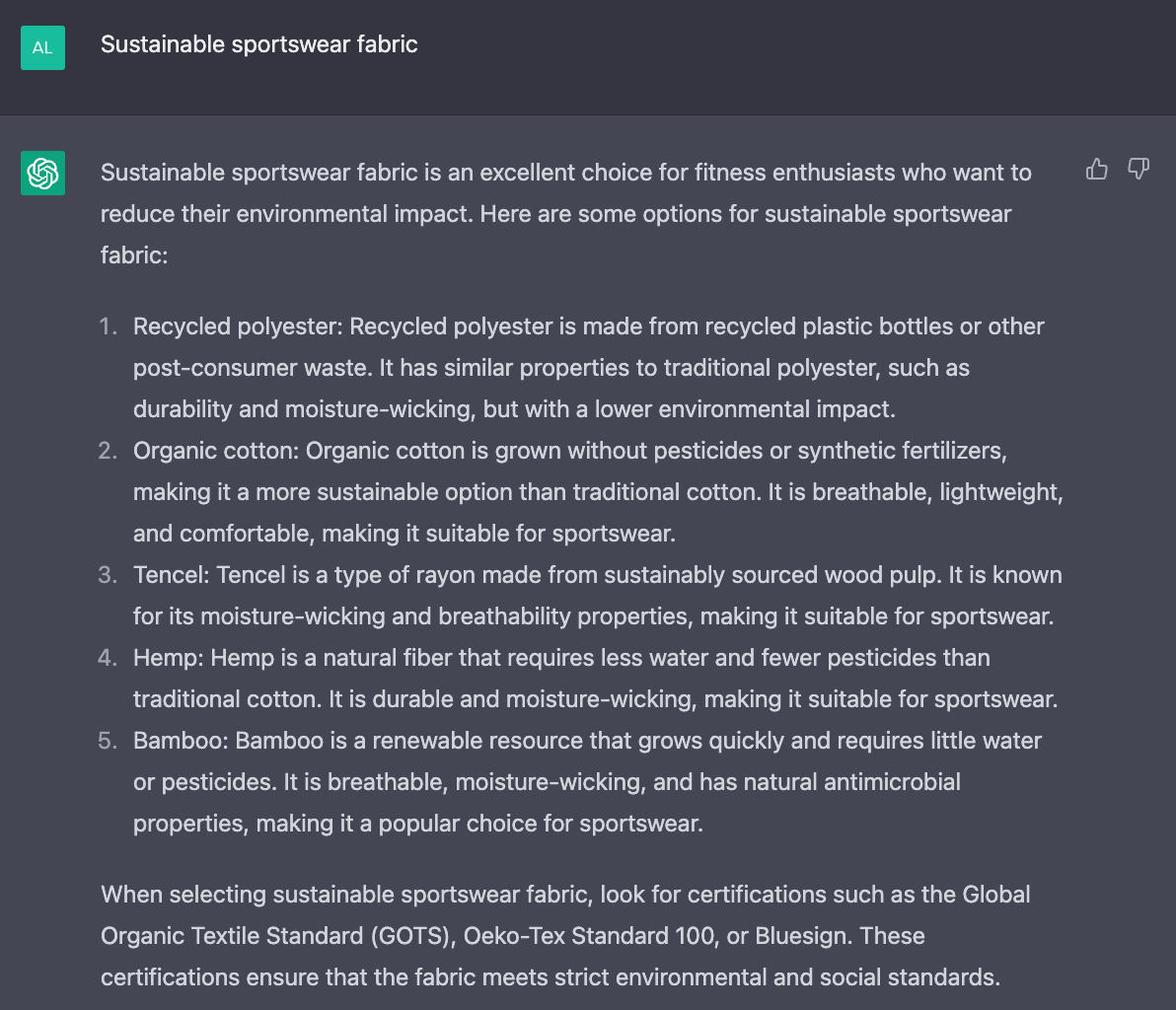
Even to help out with pattern creation;
"What measurements do I need to create a pattern for mens sweatsuit?"

Retail Business Operations
From product development to manufacturing, to buying decisions, there are a number of ways AI could be used in the business side of retail.
Buying and merchandising teams looking to cut down overstock no longer have to rely solely on subjective opinions about what is going to fly off the shelves. Instead, they can use predictive analytics and trend forecasting to make smarter buying decisions based on historical product data and rich media from the web.
Levi Strauss & Co is using AI technology to analyze stock and identify which categories and products are most likely to benefit from being on sale, powering Levi's promotions for mid-season and end-of-season sales, as well as Black Friday sales in the US and Europe.
Models
Virtual models offer several benefits to brands such as cost savings, control over the image, and the ability to showcase more clothing options. However, the use of virtual models has also sparked concerns about the impact on job opportunities for human models and the impact on body image standards.
Recently, Levi Strauss & Co partnered with lalaland.ai to create a new AI model in the hopes of showcasing a broader and more inclusive range of models across its platforms.
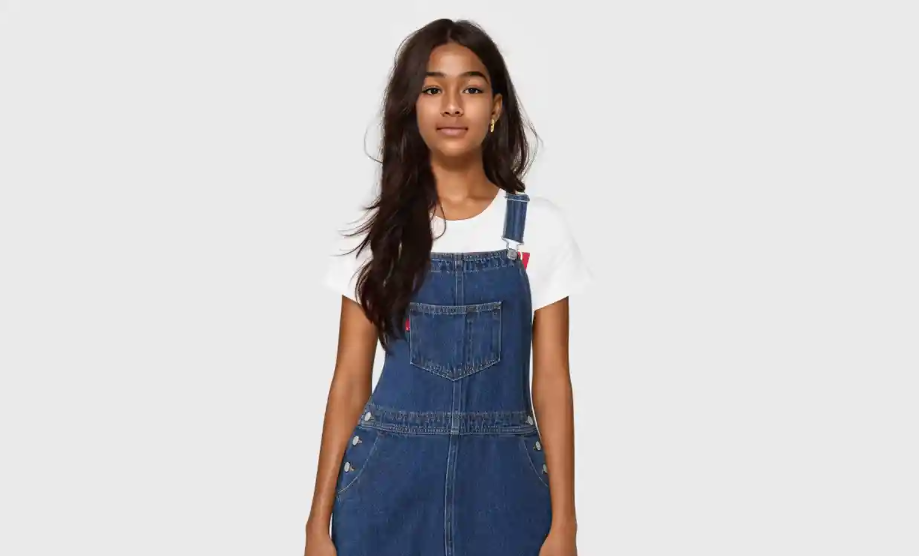
In a Guardian article, Levi’s spokesperson said; “We are excited about a world where consumers can see more models on our site, potentially reflecting any combination of body type, age, size, race, and ethnicity, enabling us to create a more personal and inclusive shopping experience.”
Deep Agency, an AI company from the Netherlands, also introduced its own "AI modeling agency," which aims to provide an alternative to traditional photoshoots. By typing in a description of what they want their photo to look like, users receive "high-quality" photos of virtual models.
Ethics of AI in Fashion
While some brands have received backlash for using virtual models, others argue that they are just another tool for enhancing creativity in the industry.
Sara Ziff, founder of the advocacy group The Model Alliance, questions if “capitalizing on someone else’s identity to the exclusion of hiring people who are actually Black could be compared to Blackface.”
Body scans are also becoming an ethical issue surrounding AI in the fashion industry. Fit models are used to help designers see how clothes look on real bodies, but now companies can use the body scans to create 3D digital models of people. This means that companies own the rights to use these scans, and the fit model is not getting paid.
This is similar to what happened to artists who had their work used to train Stable Diffusion's algorithm to generate an image in a particular artist's style without being compensated.
Conclusion
So, AI seems to be moving fast in the fashion industry, changing the way we shop, design, and create. From personalized recommendations to fashion design, the possibilities are endless. As AI continues to evolve, I can only imagine what the future of fashion will look like. So, let's embrace the technology and see where it takes us!